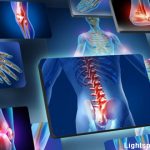The study met all primary and secondary endpoints after 12 months. In patients who received continuing glucocorticoid therapy, treatment with denosumab led to greater bone mineral density increases compared with risedronate therapy at both the lumbar spine (4.4% vs. 2.3%) and total hip (2.1% vs. 0.6%). In patients who newly started glucocorticoid therapy, denosumab treatment led to greater bone mineral increases compared with risedronate at both the lumbar spine (3.8% vs. 0.8%) and at the total hip (1.7% vs. 0.2%).
Adverse events and serious adverse events were similar across treatment groups and consistent with the already known safety profile of denosumab.
Michele B. Kaufman, PharmD, CGP, RPh, is a freelance medical writer based in New York City and a pharmacist at New York Presbyterian Lower Manhattan Hospital.
References
- Arj A, Razavi Zade M, Yavari M, et al. Proton pump inhibitors use and change in bone mineral density. Int J Rheum Dis. 2016 May 31. doi: 10.1111/1756-185X.12866. [Epub ahead of print]
- Amgen Inc. News release: Amgen announces positive top-line results from phase 3 study of Prolia (denosumab) in patients receiving glucocorticoid therapy. 2016 Aug 29.
